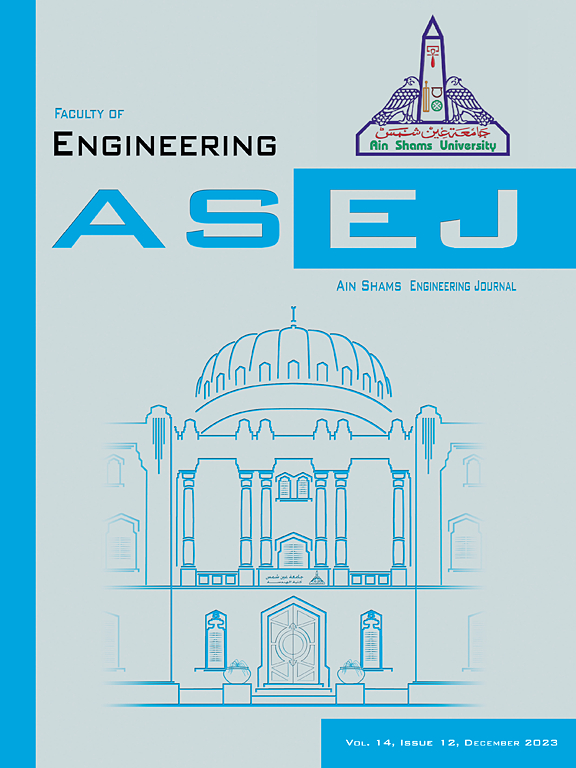A circularly polarized tunable frequency circular patch antenna for S-band space base application
IF 6
2区 工程技术
Q1 ENGINEERING, MULTIDISCIPLINARY
引用次数: 0
Abstract
This research proposes a unidirectional circularly polarized tunable frequency circular patch antenna scheme for S-band uplink satellite communications. In the antenna scheme, the circular radiating patch is enclosed by 4×8 rectangular-shaped auxiliary elements along the +x, −x, +y, and −y−axes. To shift the resonant frequency of the antenna to lower frequencies, the auxiliary elements on the four axes are uniformly shorted. There are nine shorting configurations (configurations A – I) corresponding to the S-band uplink chain (2.025 GHz to 2.110 GHz). Besides, the circular polarization is switchable between right- (RHCP) and left-hand circular polarization (LHCP) by relocating the feed point from the +y axis for RHCP to +x axis for LHCP. Switching mechanisms dynamically reconfigure the antenna by modifying its electrical length to support multiple frequency bands, all of which maintain circular polarization. Since the proposed antenna scheme is intended for the S-band uplink frequency of 2.06 GHz, measurements are carried out with configuration F of the antenna scheme. The measured impedance bandwidth (≤-10 dB) and axial ratio bandwidth (AR<3 dB) are 6.2% and 4.49%, with the maximum gain of 6.54 dBic for RHCP and LHCP. The radiation pattern is of unidirectionality. Furthermore, the proposed antenna scheme meets the qualification sine vibration and random vibration test requirements. The proposed antenna scheme is thus suitable for S-band uplink satellite communications. The novelty of this research lies in the use of the auxiliary elements of various shorting configurations to achieve frequency tunability; and the alteration of the feed point location to switch between RHCP and LHCP.
一种适用于s波段空间基的圆极化可调频率圆形贴片天线
提出了一种用于卫星s波段上行通信的单向圆极化可调频率圆贴片天线方案。在天线方案中,圆形辐射贴片由4×8沿+x、- x、+y和- y -轴的矩形辅助元件包围。为了使天线的谐振频率向更低的频率移动,在四轴上的辅助元件均匀短路。s波段上行链(2.025 GHz ~ 2.110 GHz)对应9个短空配置(配置A ~配置I)。此外,通过将进给点从RHCP的+y轴重新定位到LHCP的+x轴,圆偏振可以在右圆偏振(RHCP)和左圆偏振(LHCP)之间切换。开关机制通过改变其电长度来动态地重新配置天线,以支持多个频段,所有这些都保持圆极化。由于所提出的天线方案拟用于2.06 GHz的s波段上行频率,因此采用天线方案的配置F进行测量。测量阻抗带宽(|S11|≤-10 dB)和轴比带宽(AR<3 dB)分别为6.2%和4.49%,RHCP和LHCP的最大增益为6.54 dBic。辐射方向图是单向的。此外,所提出的天线方案满足正弦振动和随机振动的定性测试要求。因此,该天线方案适用于s波段卫星上行通信。本研究的新颖之处在于利用各种短路配置的辅助元件实现频率可调性;以及在RHCP和LHCP之间切换馈电点位置的改变。
本文章由计算机程序翻译,如有差异,请以英文原文为准。
求助全文
约1分钟内获得全文
求助全文
来源期刊

Ain Shams Engineering Journal
Engineering-General Engineering
CiteScore
10.80
自引率
13.30%
发文量
441
审稿时长
49 weeks
期刊介绍:
in Shams Engineering Journal is an international journal devoted to publication of peer reviewed original high-quality research papers and review papers in both traditional topics and those of emerging science and technology. Areas of both theoretical and fundamental interest as well as those concerning industrial applications, emerging instrumental techniques and those which have some practical application to an aspect of human endeavor, such as the preservation of the environment, health, waste disposal are welcome. The overall focus is on original and rigorous scientific research results which have generic significance.
Ain Shams Engineering Journal focuses upon aspects of mechanical engineering, electrical engineering, civil engineering, chemical engineering, petroleum engineering, environmental engineering, architectural and urban planning engineering. Papers in which knowledge from other disciplines is integrated with engineering are especially welcome like nanotechnology, material sciences, and computational methods as well as applied basic sciences: engineering mathematics, physics and chemistry.
 求助内容:
求助内容: 应助结果提醒方式:
应助结果提醒方式:


